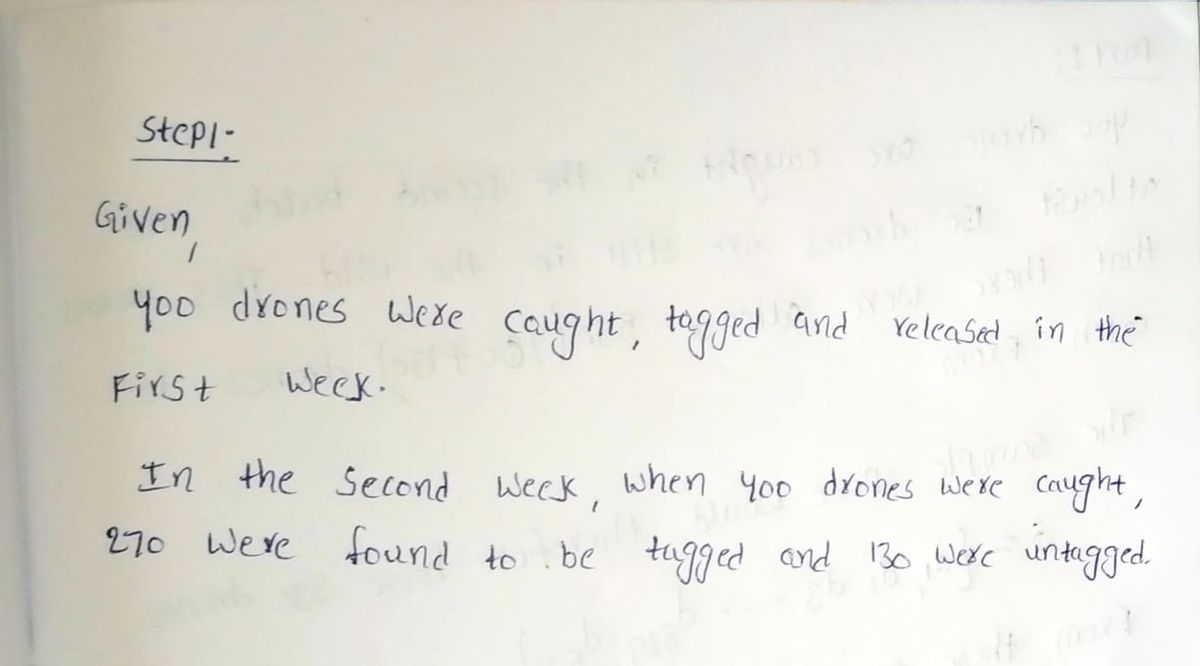Watching all these drones buzz back and forth is giving you eyestrain. But you can’t just count every single drone - how could you ever know that you had caught them all? You instead take the following approach: you build a taser-net that you can use to stun and catch drones (much more fun than just watching), before tagging them and re-releasing them into the wild. Working for a week, you manage to tag 400 drones, releasing them back into the wild. After waiting a week, you start catching drones again. Catching another 400 drones, you find that 270 of the drones you’ve caught are tagged, meaning you’d caught them before. 130 of your new catch are untagged, meaning this is the first time that you’ve caught them. Assume drones were equally likely to be caught at all times. Before catching the second batch of drones, there were 400 tagged drones in the wild, the rest were untagged. 1) After catching the second batch of drones, what is the smallest number of drones N that might be in the wild, in total? 2) What was the sample space of possible sets of 400 drones that you might catch in the second batch? How many possible outcomes is this? 3) What was the probability of catching exactly 270 tagged drones and 130 untagged drones, in the second batch? In detail please
Watching all these drones buzz back and forth is giving you eyestrain. But you can’t just count every single drone - how could you ever know that you had caught them all?
You instead take the following approach: you build a taser-net that you can use to stun and catch drones (much more fun than just watching), before tagging them and re-releasing them into the wild. Working for a week, you manage to tag 400 drones, releasing them back into the wild. After waiting a week, you start catching drones again. Catching another 400 drones, you find that 270 of the drones you’ve caught are tagged, meaning you’d caught them before. 130 of your new catch are untagged, meaning this is the first time that you’ve caught them.
Assume drones were equally likely to be caught at all times. Before catching the second batch of drones, there were 400 tagged drones in the wild, the rest were untagged.
1) After catching the second batch of drones, what is the smallest number of drones N that might be in the wild, in total?
2) What was the sample space of possible sets of 400 drones that you might catch in the second batch? How many possible outcomes is this?
3) What was the probability of catching exactly 270 tagged drones and 130 untagged drones, in the second batch?
In detail please
Given
The answer is given below.

Trending now
This is a popular solution!
Step by step
Solved in 2 steps with 3 images









